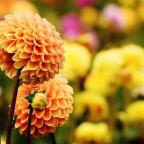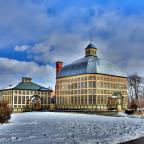
The Importance of Timber Durability for a Family Garden Project
Are you aware of timber durability and how important it is for your family garden? It’s vital you choose durable timber because it will be exposed to harsher conditions that will have an impact on its lifespan. When it comes to a residential garden, you want to make sure that the material that you choose is suitable for the long term, and can also withstand high wear and tear typically found in a family environment. Keep on reading to find out more about the durability of timber, examples of timbers that can withstand outdoor conditions for your garden, as well as how different outdoor conditions affect them.
There are a few common choices people are likely to make for an outdoor garden project using timber wood. A few examples include:
- Timber bench.
- Raised planter.
- Garden closet.
- Outdoor picnic table.
- Garden Arbor.
These examples are just the tip of the iceberg for the possibilities you can make with timber. However, the durability of the timber you choose is vital so the project will last for the maximum lifespan possible.
Otherwise, the project will need altering over time because the wood cannot withstand the weather conditions it’s exposed to outside. As a result, this can lead to an increased cost for the customer, as well as a higher amount of timber waste. However, timber is one of the more environmentally friendly materials you can choose, as it has the lowest energy consumption and the lowest carbon dioxide emissions.
Here you can find the durability class for timber, which is really useful as an overview of timber life, and the designation. This is great if you are looking at the durability of timber wood for both indoor and outdoor projects. It ranges from durability class 1 to 5, with durability class 1 being the most durable with the longest lifespan, and durability class 5 not durable at all.
However, this doesn’t take into account the conditions the timber will be exposed to. Most timber used for indoor purposes is durable provided it's in a dry area, therefore durable timber only suitable for interior projects will not work well for outdoor projects. For example, beech is a very durable timber that will last decades indoors but outdoors, it will start to rot in 6 months.
This is a great starting point should you be interested in choosing timber for an outdoor garden project, like a garden decking, table, or gazebo.
What timbers are best suited for outdoor projects?
There are a few options to choose from when it comes to timbers for outdoor projects. To be suitable for external purposes, it’s vital that wood can be resistant to outdoor threats such as moisture, UV, and decay-causing fungi.
Some examples include:
- (Hardwood) West African Iroko: Iroko due to its high natural oil content is at durability class 1 and is grown in a very wet warm environment which makes it very resilient to outdoor conditions. Iroko is great for cladding, decking, pergolas, boat building and landscaping.
- (Hardwood) European Oak: European Oak comes in at durability class 2, meaning it’s a durable material that can withstand different outdoor conditions it can be exposed to. European Oak is a great choice for exterior cladding, window frames and doors.
- (Hardwood) West African Idigbo: A moderately durable hardwood that is a durability class 3, it’s a great choice for outdoor wet environments. It’s also commonly used for window frames and outdoor furniture.
- (Hardwood) West African Sapele: Sapele has a natural oil content like iroko and is very good for outdoor use especially for painting. Despite being tough it planes down to a fine smooth texture ready for painting. It has a durability class 2 rating and can be used for porches, garage doors, window frames and barge boards.
- (Hardwood) Yellow Balau: Yellow Balau is incredibly durable, with a durable class 1 rating. This means it can withstand most outdoor conditions and is a great choice for an exterior ‘decking’ profile, with it lasting 20-30 years in outdoor conditions.
- (Softwood) European Douglas Fir: European Douglas Fir is moderately durable with a durability class of 3. It’s also rot resistant, perfect for outdoor building projects like outdoor structures, pergolas and garden walling.
- (Softwood) British Red Cedar: Coming in with a durability class of 3, it’s a moderately durable timber wood that is a great choice for outdoor projects. It’s also resistant to decay, rot, and insects, thanks to its natural oil content. It can last over 20 years when used for outdoor structures.
- (Softwood) Canadian Red Cedar: With a durability class 1 Canadian cedar is the gold standard in exterior rated softwoods. It is grown in a climate of extreme weather from hot sun to brutally cold winters which gives it its highly durable resinous quality. It is also extremely stable and tends not to warp or move as it dries out. It can last over 30 years outdoors untreated and is no.1 for cladding, fascia boards, gates, and fencing.
How do different outdoor environments impact these types of timbers?
Climates that have a lot of change in temperature ranging from warm, dry summers to cold, wet winters provide a tough environment for timbers. For example, the UK has a lot of damp months throughout the year which is the perfect conditions for fungi. It's our wide ranging species of fungi flourishing in these ideal weather conditions that break down the timbers and cause them to rot. The above species earn themselves a durability rating based on their resilience to this type of fungi attack with their natural oils or resin content. It's important to note that milder or drier climates may allow other timbers to last longer outdoors due to the arid temperatures being the wrong conditions for fungi to thrive.
This info can also help to improve your timber life overall by aiming to build in drier areas, perhaps not under trees or cladding north elevations. We hope this has had a positive impact in helping you decide on which timber woods are best suited for your outdoor projects, for residential gardens.









